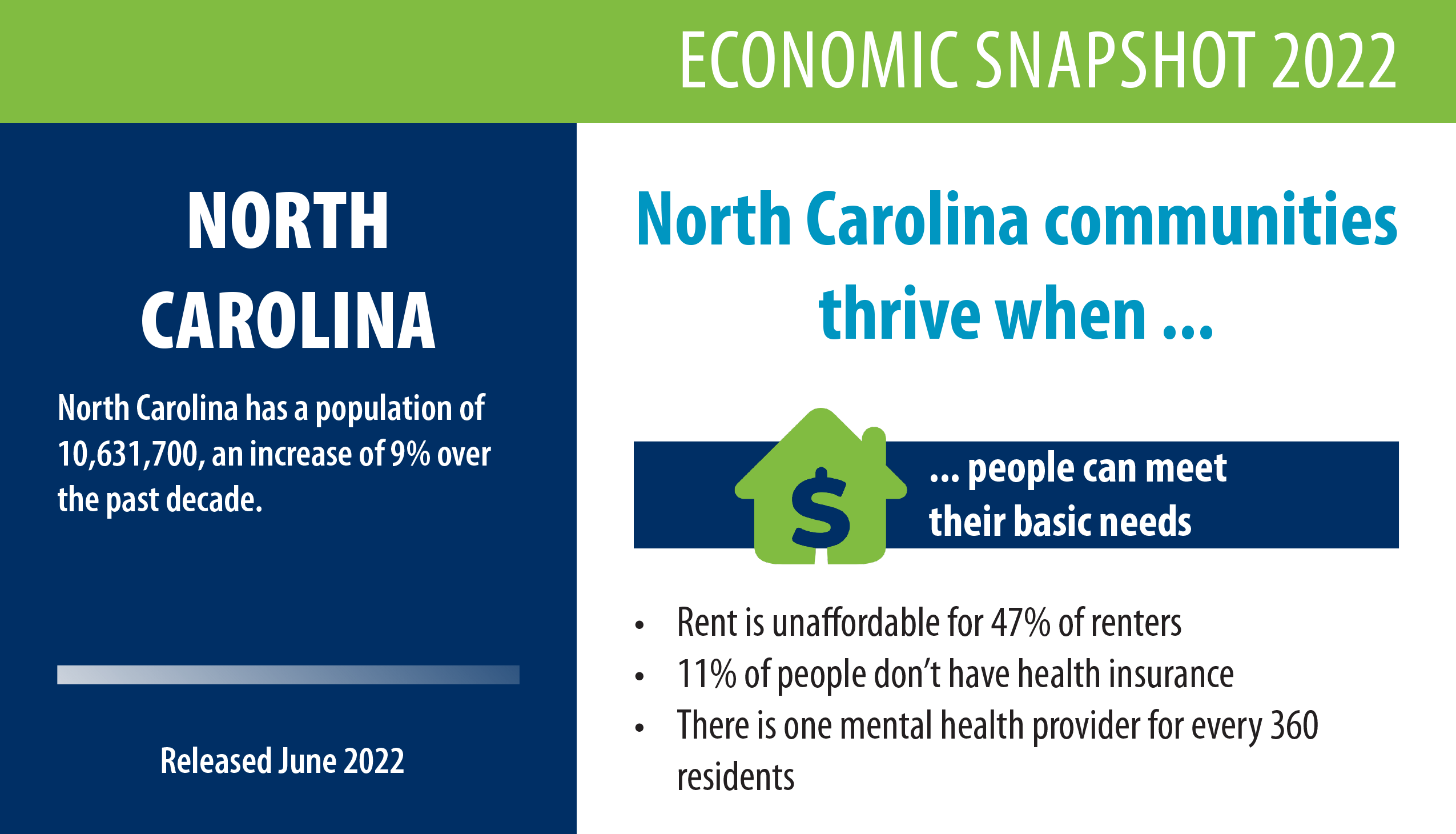
Economic County Snapshots 2022
NOTE: In 2023, we’re taking a pause to shift our publication schedule, and will release the next County Economic Snapshots in early 2024.
By publishing them at the beginning of the year, we’ll be using fresh annual data from the U.S. Census, making the Snapshots more timely. We also hope that this publication schedule will make the Snapshots more useful for people who use these data to advocate for equitable investments through state and local budgets. Publishing them early in the year will mean they’re available at the beginning of the North Carolina’s state legislative session, and when many local governments start developing their budgets.
Contact Logan Rockefeller Harris at [email protected] if you’re looking for specific data in the meantime, or if you have any feedback or ideas for us to consider during this pause.
The NC Budget & Tax Center publishes Economic County Snapshots every year that include indicators for each county in NC on employment, poverty and income, housing, health, education, and supports for working families — all of which come from a variety of sources. For more information, contact us at [email protected].
This data is available in a Google spreadsheet here, or you can download the .csv file here.
Poverty and Economic Hardship
Employment
Educational Attainment
Income and Ability to Afford the Basics
Access to Affordable Housing
Healthy Lives and Communities
Data Sources
Front Page
Population
- NC Office of State Budget and Management, Annual County Populations, July 2012 (actual) and July 2022 (projected). Available at https://www.osbm.nc.gov/facts-figures/population-demographics/state-demographer/countystate-population-projections.
Rental affordability
- U.S. Census Bureau, American Community Survey, 2016-2020, Table B25070. Available at https://data.census.gov/cedsci/.
Health Insurance
- U.S. Census Bureau, American Community Survey, 2016-2020, Table S2701. Available at https://data.census.gov/cedsci/.
Mental Health Providers
- University of Wisconsin Population Health Institute and Robert Wood Johnson Foundation, 2022 County Health Rankings, North Carolina. Available at https://www.countyhealthrankings.org/app/north-carolina/2022/measure/factors/62/data.
Candidates per job opening
- NC Works Online, Supply and Demand Detail for North Carolina, Jobs and Candidates Area Distribution. Available at https://www.ncworks.gov/vosnet/dashboards/defaultana.aspx?menuid=MENU_START_PAGE_DASHBOARD_ANA. Downloaded June 1, 2022.
- Job Source: Online advertised jobs data
- Candidate Source: Individuals with active resumes in the workforce system willing to work in the county. (Note that candidates are duplicated across counties if they are willing to work in multiple counties.)
Employment compared to pre-COVID-19 and pre-Great Recession
- NC Department of Commerce, Local Area Unemployment Statistics, Unadjusted (not seasonally adjusted) Employed data for December 2007, February 2020, and April 2022. Available at https://d4.nccommerce.com/LausSelection.aspx.
People with low incomes
- U.S. Census Bureau, American Community Survey, 2016-2020, Table B17024. Available at https://data.census.gov/cedsci/.
Incomes of the richest 5% of households compared to the poorest 20% of households
- U.S. Census Bureau, American Community Survey, 2016-2020, Table B19081. Available at https://data.census.gov/cedsci.
Back Page
Table 1: Poverty and Economic Hardship
Living in poverty
- U.S. Census Bureau, American Community Survey, 2016-2020, Tables S1701, B17020D, and B17020E. Available at https://data.census.gov/cedsci/.
Table 2: Employment
- NC Department of Commerce, Local Area Unemployment Statistics, Unadjusted (not seasonally adjusted) Employed, Unemployed, and Unemployment Rate data for February 2020, and April 2022. Available at https://d4.nccommerce.com/LausSelection.aspx.
Table 3: Educational Attainment
High school graduation
For counties with multiple Local Education Agencies (school districts), county graduation rates are estimated based on the enrollment in each district within the county.
- NC Department of Public Instruction
- Longitudinal 4-year and 5-year Cohort Graduation Rates through 2021. Available at https://www.dpi.nc.gov/districts-schools/testing-and-school-accountability/school-accountability-and-reporting/cohort-graduation-rates#additional-information.
- NC State Board of Education and Department of Public Instruction Statistical Profile. Available at http://apps.schools.nc.gov/ords/f?p=145:1.
- State Summary, Pupil Information, Table 10 – Pupils in Membership by Race & Sex
- Local Education Agencies, Pupil Accounting, Table A1 – Final Pupils by Year and Grade.
College degrees
- U.S. Census Bureau, American Community Survey, 2016-2020, Tables S1501 and S2001. Available at https://data.census.gov/cedsci/.
- Data on bachelor’s degrees is for the population ages 25 and over.
Table 4: Income and Ability to Afford the Basics
Living Income Standard
- NC Budget & Tax Center, Living Income Standard, 2022. Available at https://ncbudget.org/lis/.
Median earnings and income
- U.S. Census Bureau, American Community Survey, 2016-2020, Tables S2001 and S1901. Available at https://data.census.gov/cedsci/.
- Data on median worker earnings is for workers ages 25 and over.
Table 5: Access to Affordable Housing
Rent burden
- U.S. Census Bureau, American Community Survey, 2016-2020, Table B25070. Available at https://data.census.gov/cedsci/.
Fair market rent
- National Low Income Housing Coalition, Out of Reach 2021: North Carolina. Available at https://reports.nlihc.org/oor/north-carolina.
Table 6: Healthy Lives and Communities
Health insurance
- U.S. Census Bureau, American Community Survey, 2016-2020, Table S2701. Available at https://data.census.gov/cedsci.
Life expectancy
- NC State Center for Health Statistics, 2020 State of North Carolina and 2018-2020 County Life Expectancy at Birth. Available at https://schs.dph.ncdhhs.gov/data/lifexpectancy/.
Mental health providers
- University of Wisconsin Population Health Institute and Robert Wood Johnson Foundation, 2022 County Health Rankings, North Carolina. Available at https://www.countyhealthrankings.org/app/north-carolina/2022/measure/factors/62/data.
Food assistance
- NC Department of Health and Human Services, Food and Nutrition Services Caseload Statistics Reports, FNS Cases and Participants, April 2022. Available at https://www.ncdhhs.gov/divisions/social-services/program-statistics-and-reviews/fns-caseload-statistics-reports.

